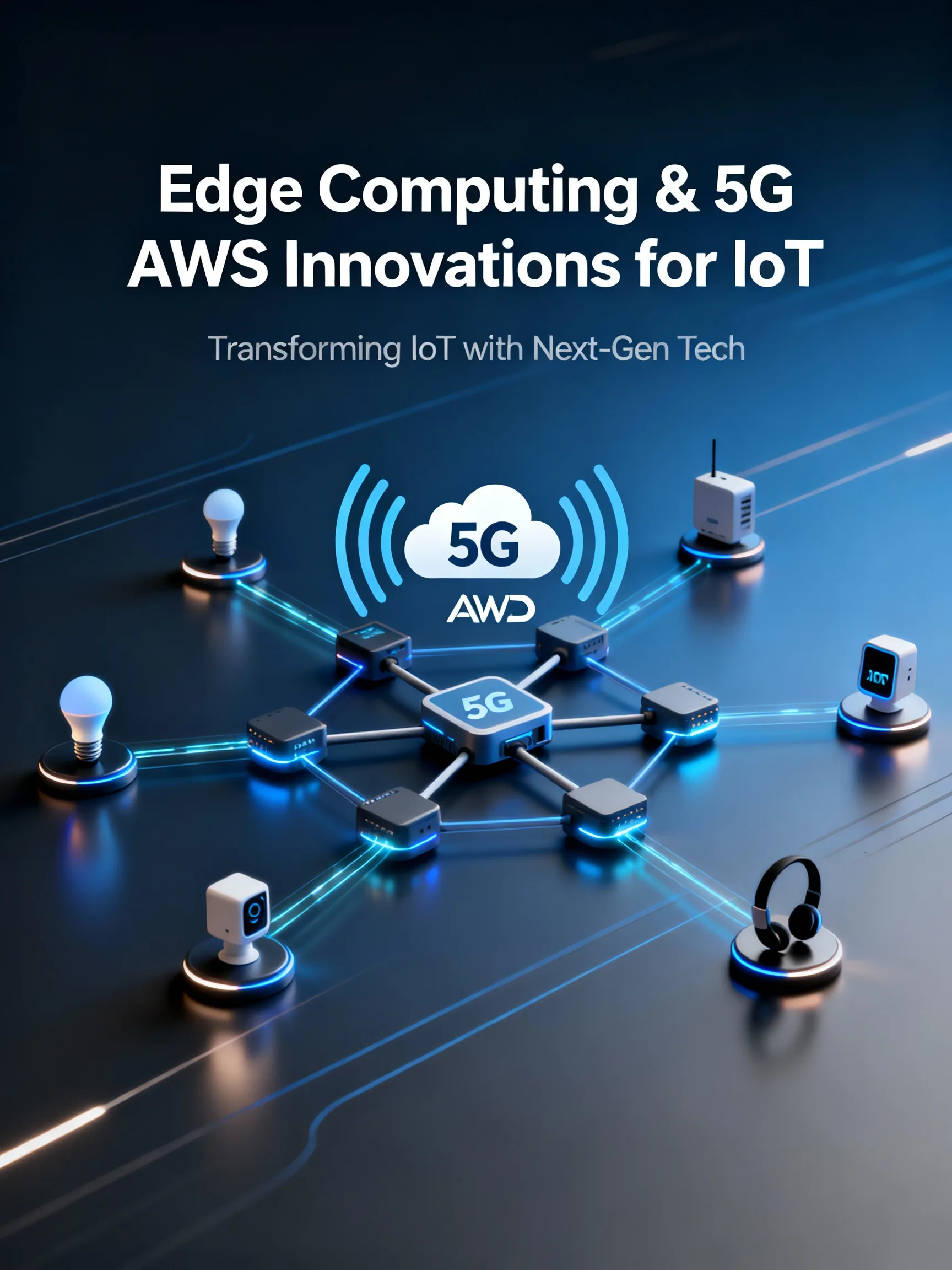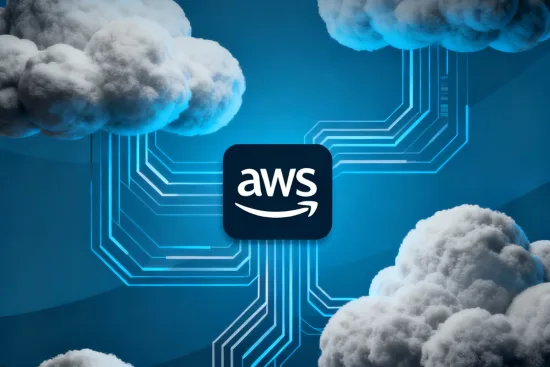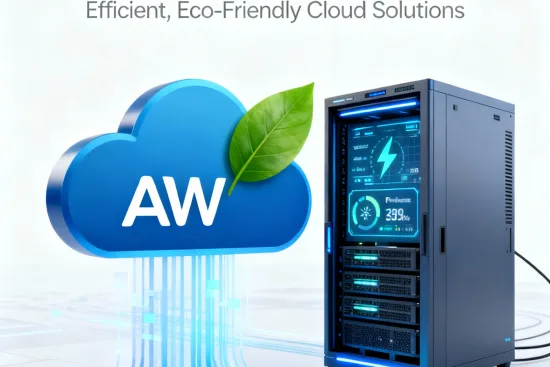
Edge computing and 5G are transforming how IoT and real-time applications are designed, deployed, and scaled. When combined with AWS, they give teams the tools to process data closer to devices, cut latency, and build smarter, faster systems. This article explores how edge computing and 5G with AWS unlock new possibilities for modern IoT and real-time workloads.
The convergence of edge, 5G, and AWS
For years, cloud computing has powered digital transformation, but traditional architectures send every request to centralized data centers. That model struggles when milliseconds matter, bandwidth is limited, or regulations keep data local. Edge computing shifts compute and storage closer to users and devices, while 5G provides the ultra-fast, low-latency network to connect it all.
AWS has invested heavily in this convergence. Services like AWS Wavelength, AWS Local Zones, AWS IoT Greengrass, and AWS Snow family bring cloud capabilities to the edge. When combined with 5G networks from telecom providers, these services help enterprises support real-time analytics, industrial monitoring, AR or VR, and connected vehicles at scale.
This alignment between edge computing and 5G on AWS enables three key outcomes: lower latency, reduced data transfer costs, and better reliability for critical workloads. Organizations can choose exactly where their data is processed, from the device itself to metro edge locations and regional AWS Regions.
Key AWS services for edge and 5G architectures
Designing robust IoT and real-time solutions requires understanding the AWS building blocks that sit between the device and the cloud. Several core services support edge computing and 5G enabled workloads:
- AWS Wavelength embeds AWS compute and storage inside 5G networks operated by telecom partners. Applications run in Wavelength Zones, which place resources closer to mobile users and IoT devices, often cutting end to end latency to single digit milliseconds.
- AWS Local Zones extend AWS infrastructure into major metro areas. They are ideal when applications need low latency to on premises environments or local users but do not require full 5G integration.
- AWS IoT Greengrass lets you run AWS Lambda functions, machine learning (ML) inference, and data processing logic directly on edge gateways and devices. It synchronizes with the cloud while allowing devices to operate even with intermittent connectivity.
- AWS Snowcone and Snowball provide ruggedized, portable edge devices for disconnected or harsh environments such as ships, mines, and remote industrial sites, where sending all data to the cloud in real time is not feasible.
- AWS IoT Core manages secure device connectivity and messaging at scale, letting you route data from millions of IoT endpoints to edge or cloud services in a controlled way.
By combining these services, teams can create layered architectures. Processing and filtering can happen on the device using AWS IoT Greengrass, time sensitive logic can run in Wavelength Zones close to 5G users, and long term storage and analytics can live in regional AWS services such as Amazon S3 and Amazon Kinesis.
Architecting low latency IoT and real time applications
To get the full value from edge computing and 5G with AWS, it is important to design for latency, resilience, and cost. A typical architecture for real time IoT looks like this:
- Device layer Sensors, cameras, robots, or wearables connect via 5G, Wi Fi, or wired networks. Lightweight agents run on devices to collect data and call local logic using AWS IoT Greengrass or container runtimes.
- 5G and edge layer Data from devices hits the 5G network and is routed to AWS Wavelength Zones or Local Zones. Latency sensitive workloads such as anomaly detection, video analytics, or AR rendering run here using Amazon EC2 or containers on Amazon EKS or ECS.
- Regional cloud layer Aggregated and filtered data is forwarded to AWS Regions for deeper analytics, storage, and integration with business systems. Services like Amazon Kinesis, Amazon Managed Streaming for Apache Kafka, and Amazon SageMaker handle large scale processing and machine learning.
Consider a smart factory example. Each machine streams vibration and temperature data every few milliseconds. Running ML models directly on an edge gateway with AWS IoT Greengrass can detect anomalies within tens of milliseconds. Alerts and control signals are sent over 5G to robots or control systems, while summarized data flows into the cloud for performance dashboards and model retraining.
Another example is AR or VR applications over 5G. Instead of pushing every frame to a distant region, rendering workloads can run in AWS Wavelength, significantly reducing motion to photon delay. This improves user experience and enables new use cases such as immersive maintenance guidance or remote assistance.
Design decisions should focus on what needs to happen now at the edge versus what can wait. A useful rule is to keep immediate safety, control, and immersive experience logic as close as possible to the user or device, while batching and sending noncritical data to the cloud asynchronously.
Industry use cases and measurable benefits
The combination of edge computing and 5G on AWS already powers diverse use cases across industries. Organizations are turning latency into a strategic advantage while controlling data transfer costs and improving reliability.
- Manufacturing and industrial IoT Factories use high frequency monitoring to reduce downtime and enable predictive maintenance. McKinsey estimates predictive maintenance can reduce machine downtime by 30 to 50 percent and increase machine life by 20 to 40 percent. Deploying these analytics at the edge with AWS IoT Greengrass and 5G allows instant responses, such as stopping a machine to prevent damage.
- Smart cities and transportation Traffic cameras and sensors stream data to edge nodes hosted in Local Zones or Wavelength Zones. Real time analytics can optimize traffic lights, detect incidents, and enable vehicle to infrastructure communication. This reduces congestion and improves safety compared to systems that rely solely on centralized processing.
- Retail and venues Stores and stadiums use 5G and edge to power personalized experiences like real time offers, AR wayfinding, and computer vision based checkout. Processing video feeds locally reduces bandwidth costs and compliance risks, while still enabling aggregated analytics in the cloud.
- Healthcare and telemedicine Clinics can deploy low latency image processing for diagnostic tools or AR based remote surgery assistance. Although strict regulations apply, processing data at the edge helps keep sensitive information local while still leveraging AWS for storage, analytics, and ML model management.
Across these scenarios, common benefits appear reduced latency, better resilience when connectivity is limited, and more efficient use of network bandwidth. Instead of sending every raw data point to the cloud, organizations can filter and compress events at the edge, often cutting data transfer volumes dramatically.
Best practices for adopting edge and 5G on AWS
To get started with edge computing and 5G using AWS, it helps to follow a few practical best practices:
- Define latency and locality requirements Map your application components to specific latency budgets. Identify which workflows must respond in under 10 milliseconds, 50 milliseconds, or longer. This directly influences whether logic runs on devices, edge sites, or in Regions.
- Adopt a layered security model Use AWS IoT Core for device authentication, mutual TLS, and fine grained policies. Encrypt data in transit and at rest across devices, edge, and cloud. Treat edge locations as extensions of your cloud perimeter, not exceptions.
- Design for intermittent connectivity Assume that devices or edge sites will occasionally lose connection to the cloud. Use local buffering, store and forward patterns, and idempotent APIs. AWS IoT Greengrass offline capabilities and Snow devices support these scenarios.
- Automate deployment and observability Manage edge applications with infrastructure as code and CI or CD pipelines. Use AWS tools to push updates to fleets of devices and edge nodes. Collect metrics and logs centrally so operations teams can monitor performance and security.
- Start with focused pilots Instead of redesigning entire systems, choose high impact use cases where edge computing and 5G yield clear benefits, such as a single production line, a flagship store, or a specific mobile application feature.
By following these guidelines, teams can minimize operational complexity while still capturing the advantages of edge computing and 5G on AWS.
Conclusion
Edge computing and 5G, combined with AWS innovations, are redefining what IoT and real time applications can do. By placing compute closer to devices, organizations reduce latency, improve reliability, and use bandwidth more intelligently. Starting with clear latency goals, secure architectures, and targeted pilots, enterprises can gradually build powerful edge to cloud systems that unlock new business value.






Leave a Reply